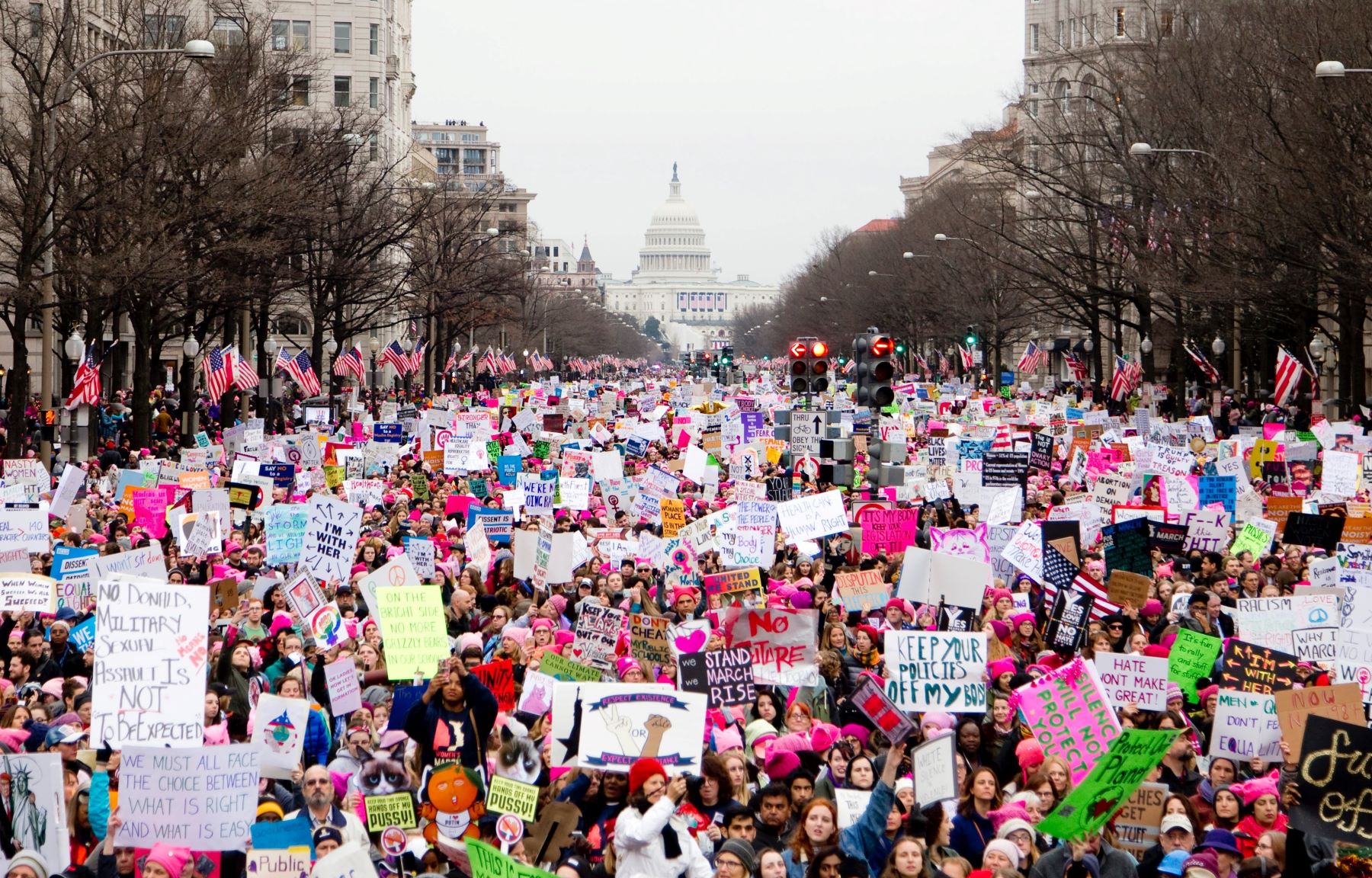On Oct. 29, the American Civil Liberties Union announced they officially blocked Alabama’s abortion ban. Out of the seven states that decided to directly implement a total outlaw of the procedure, Alabama had imposed the strictest legislation.
The ACLU worked tirelessly alongside Planned Parenthood and several other women’s rights organizations to stop states from repealing the right to abortion that was established by Roe v. Wade in 1973. As a bit of background information, Alabama’s ban would have made abortion illegal even in the cases of incest, rape and even if the woman’s physical health was at risk.
BREAKING: We just blocked Alabama's abortion ban.
With this federal court ruling, it's official: None of the state abortion bans passed earlier this year are in effect.
Abortion remains legal in all 50 states.
— ACLU (@ACLU) October 29, 2019
Past or present, numerous examples prove an abortion ban is never an effective solution. Whether it’s to reduce the number of unwanted pregnancies or save lives, history always shows banning it is a problematic decision. States that allow abortion without any extraneous limitations actually have fewer problems with crime.
Today more than ever, women can find a loophole around the abortion ban thanks to the internet. A drug named misoprostol presents a safer alternative to a self-induced abortion in many countries. It’s also approved and included on the World Health Organization’s “List of Essential Medicines,” which means it is considered safe and effective. It proves to be around 75-85% effective in the first trimester of pregnancy.
Several online websites also provide information on how to work around restrictive laws, and organizations such as Women on Web even ship the pill to several countries where it’s illegal to abort.
Although Women on Web don’t ship to the U.S. because of the number of restrictions, misoprostol is readily available in all retail pharmacies. With that being said, how is it even possible to prevent a woman from deciding when it’s her time to give birth? Legal or illegal, abortions are going to occur and all evidence shows the effort being placed into prevention is counter-intuitive.
Although factual evidence proves that outlawing abortion doesn’t prevent it, many still believe it’s a heartless course of action for women to take. Their personal stance on the issue is rightfully theirs. Whether it’s based on religious beliefs or family-principles, your thoughts concerning your life and pregnancy are yours to have. Life isn’t black and white and neither is this subject on a personal level.
However, the narrative drastically changes when it’s a national concern. This is because millions of women across the country view abortion as their birthright. Many fight and advocate for the right to choose and taking that away only intensifies the outrage.
The main point behind this observation is that medicine is providing a new, non-surgical and non-invasive option for women deciding to postpone motherhood. Prior solutions included back-alley procedures and self-induced alternatives that were just as physically harmful as they were mentally. Although abortion pills aren’t perfect, people are more likely to trust them.
Through the help of the internet and medicine, the likelihood a woman will abort, regardless of its legality, has only increased. Whether it’s “abortion by mail” or through pharmacy purchases, other non-surgical alternatives are the latest and most promoted loophole.
This still results in unfortunate circumstances, like an increase in maternal mortality or prison sentences, such as the case with Alabama’s abortion regulations, where doctors would have served up to 99 years in prison for carrying out abortion procedures. Or, like in the case of Georgia’s blocked ban, women would have served life if charged with murder.
How likely was this to occur, though, if the laws were passed but the loophole drug is a known safer method? Well, safer doesn’t mean safe. The efficacy rate is only between 75-85% during the first trimester and, if not taken correctly, can lead to serious health hazards.
Harmful side effects when the drug is taken between 13-20 weeks of a woman’s pregnancy are even more probable. Once past the first trimester, it’s not recommended to attempt aborting alone at home and ready access to an emergency room is a requirement. Especially since overdoses at this stage are also very prevalent.
Around 700 women die each year in the U.S. due to pregnancy-related problems. Although this is far less than in developing countries, the U.S. has the highest maternal mortality rate among developed countries. Ironically, the states most inclined toward banning abortion also have the highest rates of maternal and infant mortality. Georgia comes in at No. 1 with the highest maternal mortality rate, followed by Louisiana and Missouri.
Other states with high rates of maternal mortality include Arkansas and Mississippi. The abortion ban would not have diminished the problem but would increase the issue of women dying — all due to the halting of an option that saves the lives of women and fetuses.
These same states also have the highest infant mortality rates, with Mississippi and Alabama leading the list. Louisiana, Arkansas, Georgia and Ohio all follow closely behind.
Alabama: BLOCKED ⚖️✅
Georgia: BLOCKED ⚖️✅
Missouri: BLOCKED ⚖️✅
Arkansas: BLOCKED ⚖️✅
Kentucky: BLOCKED ⚖️✅
Ohio: BLOCKED ⚖️✅
Utah: BLOCKED ⚖️✅
Politicians, listen closely: We have a constitutional right to abortion. If you try to ban it, we will see you in court.
— ACLU (@ACLU) October 29, 2019
If the situation didn’t lead to a fatality, it could’ve led to an arrest warrant in some states. When it comes to abortion pills, if not taken correctly, they can lead a woman straight into the hospital. In states trying to implement bans, hospitalization would grant access to a woman’s confidential medical history.
Such access was invariably linked to time behind bars for women. The hospital room is no longer simply a part of a medical facility. It turns the hospital into a potential crime scene, the doctor and or women into suspects and results in a lifetime of injustices.
This violates so many patient-doctor discretion laws, all over a woman’s decision to protect her health. Restrictions on abortion throughout the U.S. are also at an all-time high since Roe v. Wade was passed over 40 years ago. States have placed immeasurable efforts into restricting abortion, passing more than 479 such constraints.
States including Kentucky, Mississippi, Missouri, North Dakota, South Dakota and West Virginia only have one available clinic. While this has been ongoing since 2011, 2019 is just the first year that states have decided to outwardly announce their sentiments toward abortion.
Pair inadvertent pregnancies, lack of healthcare assistance — whether it’s a limited number of contraceptives or outrageously long appointment wait times — and the tireless effort to restrict and now outwardly ban abortions and the results are perilous. Maybe it was a blessing in disguise. Instead of skipping around the pond, now these issues can be addressed directly.
From politicians to the public, confronting states that continue to make the lives of women more difficult is now more understandable. This conversation about restricting abortion rehashes the same argument; meanwhile the maternal and infant mortality rates, increase in orphanage numbers or even criminality don’t change.
Women aren’t human incubators. We are people, and our bodies shouldn’t need to be dictated by groups of religious men. If these laws are truly being enacted to help women, then women should be a part of the conversation.
Honestly, most women would probably agree that a far sounder solution to reducing unintended pregnancy is expanding contraceptive access across the country. According to the Power to Decide Campaign, over 19 million women currently live in a contraceptive desert, meaning their access to a healthcare facility offering a full range of contraceptive methods is severely limited.
Over 1.6 million women also live in a county without a single healthcare provider. Not one. Nothing, nada. Changing that might be a more realistic answer to reducing the number of unintentional pregnancies.
Although websites such as Simple Health revolutionized a woman’s access to birth control stateside, it doesn’t completely solve the problem. There are women who’d opt for non-hormonal family planning methods and don’t have access to the methods they prefer. So, many are placed in a very uncomfortable predicament — one that leaves them nearly powerless regarding a very natural act, because we’re all only human and promoting abstinence is kicking dust in the wind.
If people really want to help, start by giving women proper reproductive health care. That will actually reduce the number of unintended pregnancies. The result? A decrease in the number of abortions annually.
















